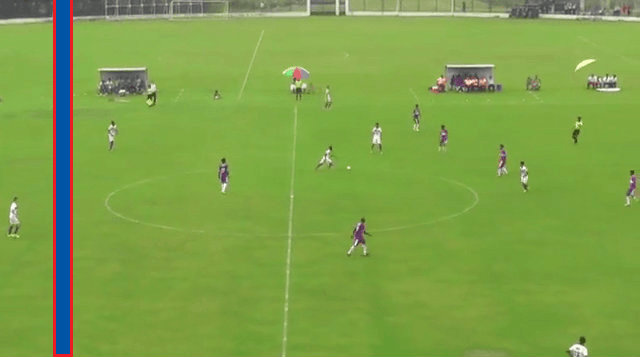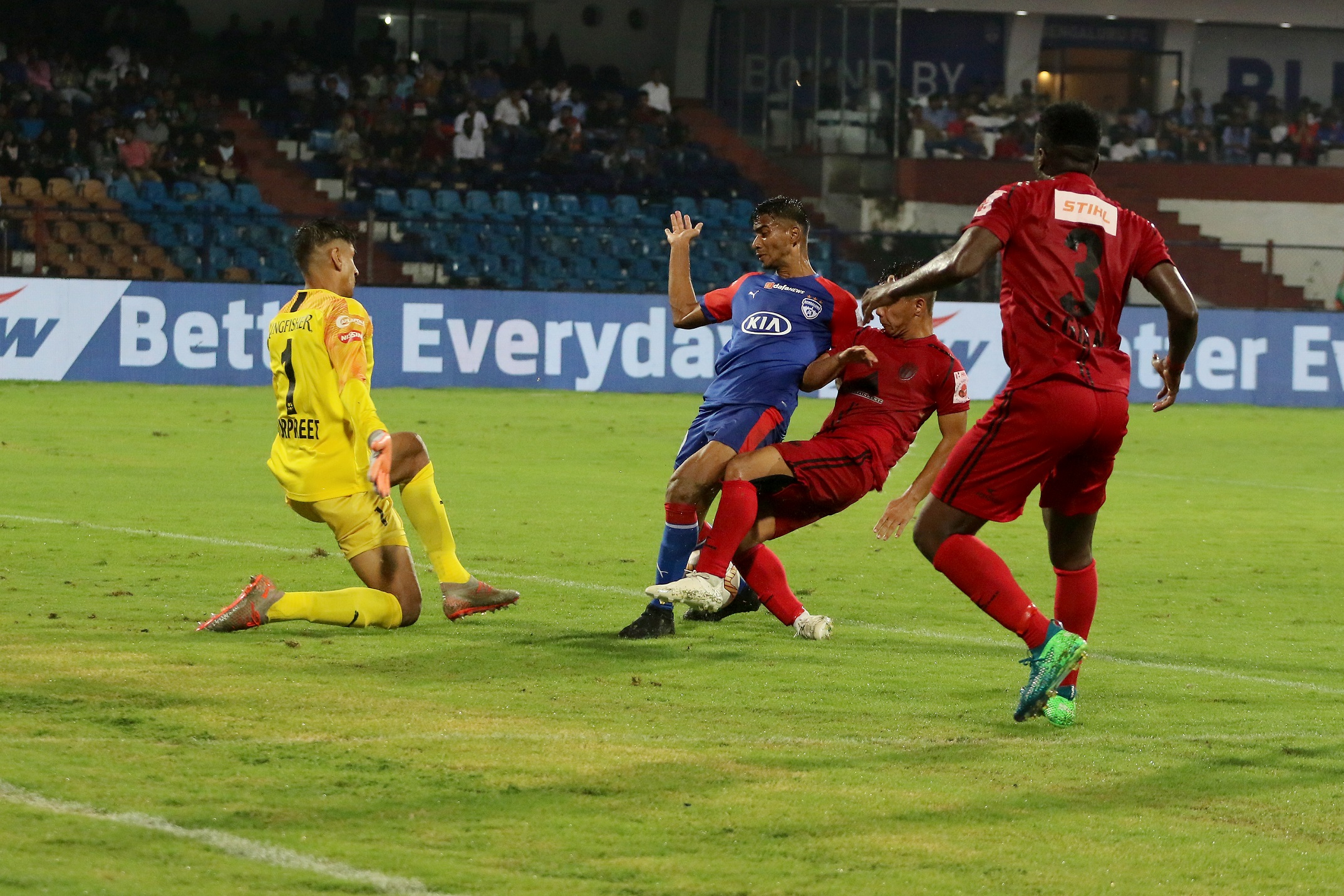Last week I wrote about how Bengaluru FC’s fans are creating an atmosphere that is quite rare in Indian football, this week’s post talks more about their on-field play.
Bengaluru FC have a splendid YouTube channel, run by their media head Kunal Majgaonkar. Bengaluru FC fans can regularly view highlights of recent matches, exclusive interviews etc, you know the drill. It’s a well run channel, and a rare one in Indian football with not many clubs owning such a medium for fans to interact.
I often swing by to re-watch some of the games, but the latest video that was uploaded on the channel couldn’t have had better timing. I was just preparing a piece on Bengaluru FC’s possession based game and what it means for Indian football and this video came along, adding credibility to this piece. You can see the video below.
We see periods of the match against United SC where Bengaluru FC strung 30-40 passes consecutively without losing possession. Now this is something that sides like Bayern Munich and Barcelona do on a weekly basis leaving viewers accustomed to the usual. But many European sides, owing to the pace of the game in the continent, fail to retain possession throughout the game. Certainly such a feature is absent in Indian football, where sides just play the old ‘hoof ball’ game, one of the primary reasons why football fans in India find Indian football boring; it’s with good reason.
But what Bengaluru FC displayed down below was immensely gratifying. We talk about improving grassroots football, promoting football camps, infrastructural developments, increasing sponsorship etc, but one factor we always overlook when talking about football in India is the football itself, everything else is secondary.
What the game needs in the country is a clear identity, aesthetic football, football which requires confidence & technique. Ashley Westwood, in less than one season, is certainly changing the game in the country. He has begun to implement his own identity on the club, to a point where the boys in blue are confident with the ball at their feet, aren’t rushed into rash decisions, calm and composed, stringing passes along together and overall realising the importance of keeping the ball as opposed to pumping it upfield.
It’s a drastic improvement to the game as we know it in the country, and sets an example for not only other clubs to follow, but the national team as well. To be fair to Indian national team coach, Wim Koevermars, this is exactly what he is trying to do with the side. It’s a period of transition with the football being played changing. It’s a problem because not too many other clubs keep possession in this manner, and when you’re told to do it for the national team, it’s a big step up and a step in a different direction. Players at clubs don’t learn to keep possession, but it’s the football that is trying to be implemented at the national team. See the problem there?
It’s due to this factor that some of the results under Koevermars haven’t been favourable, his footballing idea and philosophy is correct but it’s implementation is lacking. One fears that if poor results persist, then the best footballing philosophy to have been implemented in Indian football won’t be realised and Wim could lose his job. It’s unfortunate because football like this isn’t implemented overnight.
Having said that, Ashley Westwood and Bengaluru FC have implemented a possession based game in less than a season. And they have the results to show for it. The South Indian side are threatening with the ball, and it’s no surprise that they’re leading the charge at the top of Indian football. Barring a complete meltdown, one has to expect them to go on and claim their maiden I-League title. Given the type of football played, a meltdown is unlikely, but you never know in football. Fingers crossed.
It has to be said here though, that despite this being a possession based game, critics will be quick to point out that it’s no where in the mould of the top European sides. Bengaluru FC’s possession based game is rather defensive, with not much seen in the attacking third. But again, it’s a footballing style that’ll take ages to be imprinted on any side. The idea is right, the execution is satisfactory, the long term implementation will take some time. Backward passes, though not as aesthetically pleasing, are crucial for any tiki-taka and total football style as this provides a safe outlet for the site thus allowing the retention of possession. As I said, they’re getting the idea right. They’re also willing to spread the ball wide and stretch play, rather than play into the congestion.
Credit also has to be given to Bengaluru FC’s midfield playmaker, John Menyongar. The 33-year-old Liberian is crucial to Bengaluru FC’s side, and certainly this possession based football game. He provides that much needed balance in Bengaluru FC’s side and the youngsters in the team can only learn from the experienced midfield man. As both an Indian, and a Bengaluru FC fan, I’d love to see a youngster come in to the side and play the game currently being played by John Menyongar.
A lot of food for thought for Indian football fans; I leave you with the video I mentioned at the start of this piece. Take a moment and let it sink in that this type of football was on display in Indian domestic football. Take a moment to think what wonders it can do if it’s implemented throughout the country, at all levels.

























































